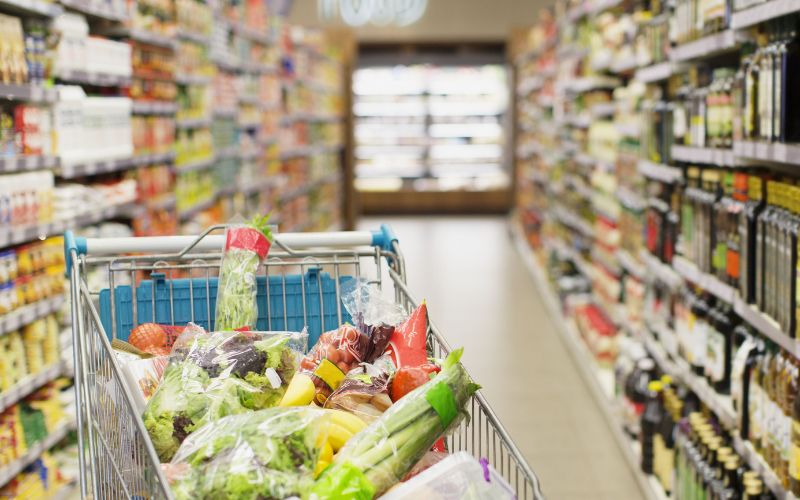In today’s fast-paced world, where the demands of work, family, and personal responsibilities often extend well beyond the traditional nine-to-five schedule, the convenience of having a grocery store open late into the night or even 24 hours a day cannot be overstated. Whether it’s a last-minute ingredient needed for dinner, an unexpected run for baby supplies, or simply the preference for shopping during quieter hours, knowing the operational hours of your local grocery store is essential. This article explores various factors influencing grocery store hours, how to find out when the closest grocery store is open, and the impact of these hours on consumers and communities.
Factors Influencing Grocery Store Hours
The operational hours of grocery stores are influenced by a myriad of factors, including location, customer demand, competition, and municipal regulations. Understanding these factors can provide insight into why stores might have different hours in various regions.
- Location and Demographics:
- Urban Areas: In densely populated urban areas, grocery stores often stay open later to accommodate the busy schedules of city dwellers. Many urban stores are open 24 hours, particularly in cities with a high population of young professionals and night-shift workers.
- Suburban Areas: Suburban grocery stores may have slightly reduced hours compared to their urban counterparts but still tend to stay open late, usually until 10 PM or midnight, catering to families and individuals who commute and may need to shop after typical work hours.
- Rural Areas: In rural areas, where the population is less dense, grocery stores often close earlier, sometimes as early as 8 or 9 PM, reflecting the slower pace of life and lower demand for late-night shopping.
- Customer Demand:
- High customer demand can lead to extended hours. Stores analyze shopping patterns and adjust hours accordingly to maximize convenience for their customers and boost sales.
- Seasonal demand also plays a role. For example, stores may extend hours during holidays or special events when people are more likely to shop at unusual times.
- Competition:
- In competitive markets, grocery stores may extend their hours to attract more customers. If a rival store stays open until midnight, others in the area may follow suit to avoid losing business.
- Municipal Regulations:
- Local laws and regulations can impact store hours. Some municipalities have restrictions on how late businesses can operate, especially in residential areas, to minimize noise and disruption.
Finding Out Grocery Store Hours
With the advent of technology, discovering the hours of operation for your nearest grocery store has become easier than ever. Here are several methods to find out how late the closest grocery store is open:
- Google Search:
- A simple Google search for “grocery store near me” or the name of a specific store will typically yield the store’s hours of operation. Google Maps provides real-time information and updates on store hours, including holiday hours and special events.
- Store Websites and Apps:
- Most major grocery chains have dedicated websites and mobile apps where customers can check store hours. These platforms often provide additional details such as weekly ads, digital coupons, and in-store events.
- Social Media:
- Many stores maintain active social media profiles where they post updates about store hours, promotions, and special events. Following your favorite grocery store on platforms like Facebook, Twitter, or Instagram can keep you informed.
- Customer Service:
- Calling the store directly or checking automated phone systems can provide the most accurate and up-to-date information. This method is particularly useful if you need to confirm special hours or holiday schedules.
- Third-Party Apps:
- Several third-party apps and websites aggregate information about store hours for various retailers. Apps like Yelp, Foursquare, and HoursMap offer user-generated content and reviews that can include store hours.
Impact of Store Hours on Consumers and Communities
The hours of operation for grocery stores significantly impact consumers and communities, affecting everything from personal convenience to local economies.
- Consumer Convenience:
- Extended store hours offer unparalleled convenience, allowing consumers to shop at times that fit their schedules. This flexibility is especially valuable for those with irregular work hours, parents with young children, and individuals who prefer to shop during quieter periods.
- Work-Life Balance:
- For employees, flexible store hours can mean more job opportunities and the ability to work shifts that align with personal commitments. However, it can also pose challenges, such as the need for childcare during non-standard hours or managing work-life balance.
- Local Economy:
- Grocery stores that stay open late or operate 24/7 contribute to the local economy by creating jobs and generating sales tax revenue. They also support other local businesses, such as restaurants and service providers, by offering accessible shopping options.
- Community Safety and Well-Being:
- Well-lit and active grocery stores can enhance community safety, providing a sense of security for late-night shoppers. Conversely, extended hours may raise concerns about increased noise or traffic in residential areas.
- Environmental Impact:
- Extended operating hours can lead to higher energy consumption, impacting the store’s carbon footprint. Grocery stores must balance the benefits of convenience with sustainable practices, such as energy-efficient lighting and refrigeration systems.
Examples of Major Grocery Store Chains and Their Hours
Different grocery chains have varying hours of operation, influenced by the factors mentioned earlier. Here are examples of some major grocery store chains and their typical hours:
- Walmart:
- Many Walmart stores operate 24 hours a day, especially in urban and suburban areas. This makes Walmart a go-to option for late-night shopping. In rural areas, Walmart stores may close earlier, around 10 or 11 PM.
- Kroger:
- Kroger stores generally have extended hours, often from 6 AM to midnight. Some locations may operate 24 hours, while others may close earlier depending on local demand and regulations.
- Safeway:
- Safeway’s operating hours typically range from 6 AM to midnight. However, some locations may have reduced hours, closing around 10 or 11 PM.
- Publix:
- Publix stores usually operate from 7 AM to 10 PM, providing ample time for customers to shop before or after work. In certain locations, hours may extend to midnight.
- Trader Joe’s:
- Trader Joe’s stores tend to have more limited hours, often from 8 AM to 9 PM. The focus on customer service and a unique shopping experience can sometimes mean shorter hours compared to other chains.
- Whole Foods Market:
- Whole Foods stores generally operate from 8 AM to 10 PM, catering to health-conscious consumers who may prefer early morning or late-night shopping.
- Aldi:
- Aldi stores typically have more restricted hours, often from 9 AM to 8 or 9 PM. The focus on efficiency and cost savings contributes to shorter operating hours.
Conclusion
Knowing how late the closest grocery store is open is a vital piece of information for modern consumers. With the convenience of technology, finding this information has never been easier. Whether you’re a busy professional, a night owl, or someone with an unpredictable schedule, the availability of grocery stores during late hours provides essential flexibility and convenience. Understanding the factors that influence store hours, such as location, customer demand, competition, and regulations, can help you better appreciate the dynamics behind these operational decisions.
Extended grocery store hours not only benefit consumers by offering flexibility and convenience but also positively impact local economies and communities by creating jobs and contributing to safety and well-being. However, it’s important to balance these benefits with considerations for employee work-life balance and environmental sustainability.
In summary, the next time you find yourself in need of groceries at an unusual hour, rest assured that a variety of resources are available to help you determine how late the closest grocery store is open. Whether through a quick Google search, a store’s mobile app, or a call to customer service, you can easily find the information you need to make your shopping experience as convenient and efficient as possible





